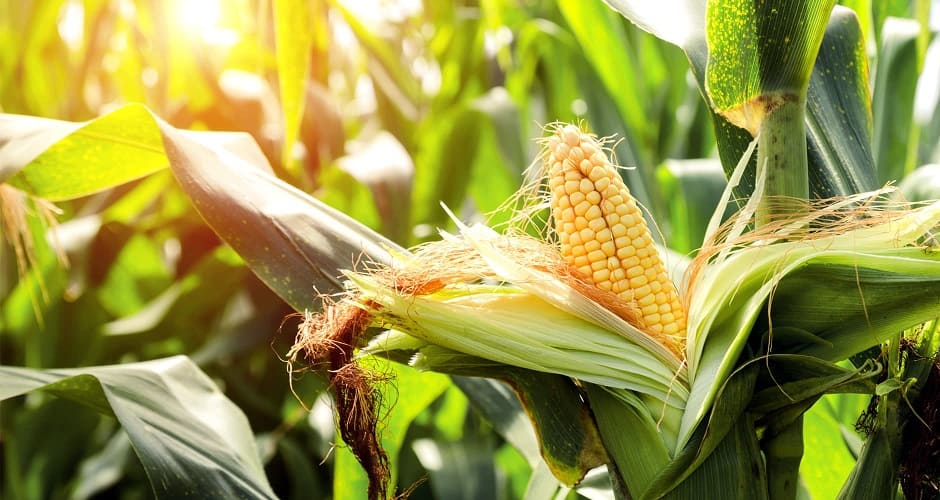Raising sweet corn is a delicious summer crop, an educational experience for children, and an opportunity to generate additional income.
Its taste is a universal joy of the summer season and is more than just a treat. The selection of the best variety and consumer education are vital in the cultivation process.
The quintessential American summer food, sweet corn on the cob, is one of the few vegetable crops that originated in the Americas. Its origins trace back to the American Indians, who developed the sweeter variety by selectively breeding for sweetness qualities.
This was achieved through a gene mutation that causes the kernels to contain twice as much sugar and less starch than field corn varieties.
The history of corn provides a rich tapestry for family conversations on food traditions. The Foodways 4-H Folkpatterns Project presents many ideas and activities to explore these traditions.
For instance, preserving sweet corn by freezing is a tradition in many families, and it can be enjoyed later during Thanksgiving dinner. The corn can be frozen either on the cob or after blanching, with the latter method involving removing the kernels.
Overall, raising sweet corn has many benefits beyond its delicious taste. It is a versatile crop that can be grown for personal use or profit. Its history provides a rich foundation for family discussions, and its preservation for future use is a time-honored tradition.
So, why not try cultivating sweet corn and reap its many rewards?
Sweet Corn: A Versatile and Nutritious Crop for Summer Meals
Sweet corn is a variety of maize that owes its name to a natural genetic mutation that gives it an especially sweet taste. To preserve its sugar levels, sweet corn is harvested in its immature form, also known as the ‘milk stage.’
Its sugar content quickly converts to starch if left too long on the plant. This crop, native to the Americas, has gained global popularity and is grown on every continent except Antarctica.
In America, the largest sweet corn producer globally, one can find a magnificent corn palace in Mitchell, South Dakota. Every year, fresh crops of corn and other grains are used to create beautiful murals on the palace’s exterior.
Additionally, the tallest sweet corn plant ever grown reportedly measured an astounding 10.74m in height.
While corn is technically a grain, it is widely used as a vegetable. Each ear or cob has 16 rows and can contain up to 800 kernels.
The silks at the top of the cob correspond to each kernel, and sweet corn is available in ample supply throughout the summer in stores and roadside stalls.

Sweet corn can be used in many dishes, from salads and cakes to salsas and stir-fries. Boiled, microwaved, or thrown on the barbecue, sweet corn is a versatile ingredient.
Sweet corn is high in carbohydrates, much like potatoes. It contains antioxidant carotenoids, such as lutein and zeaxanthin, which are beneficial for eye health.
When buying fresh corn, look for green, fresh husks, pale green silks, and plump kernels without wrinkles or dents. Keep your corn in the crisper drawer of your refrigerator, with the husks still on, and use them within a day or two to avoid losing their sweetness.
Here are a few tips to get the most out of your sweet corn: for a quick snack, microwave a cob of corn in its husk on high for about 5 minutes. You can make creamed corn by grating cooked corn from the cob.
If you are barbecuing cobs, plunge them into iced water about an hour before cooking to ensure they cook evenly. Sweet corn is a delicious and versatile crop with many health benefits, making it an excellent addition to any plate.
Family Traditions of Sweet Corn Farming
In the verdant lands of Bledsoe County, Tennessee, lies the Century Farm, owned by the LaFevor family. The sweet corn crop, which they have been tending for five years, has become a cherished tradition for this family.
Jenna LaFevor’s uncle, Lynn Johnson, was the one who introduced them to the practice. Starting to fund his daughter’s education, Lynn and his wife, Sherry, began growing sweet corn, with their daughter Elle joining in later.
The family tradition continues with the LaFevors, and their daughter, Landry, now helps to cultivate the crop as well. Another Tennessee farmer, Charlie Barker, has been raising sweet corn for many years, aiming to generate income for his kids.
With guidance from a vegetable specialist and seed company representative, LaFevors and Barker provide invaluable insights into selecting the best variety of sweet corn to suit one’s needs.

Tips for selecting and handling sweet corn
As summer approaches, the sight of fresh sweet corn on display at your local grocery store or farm stand will surely excite your taste buds. Whether you prefer yellow, white, or bi-color corn, you’ll find that the supersweet variety comes in all three colors.
Interestingly, people’s preferences for corn color are primarily based on their upbringing and cultural background rather than the sugar content or quality of the corn.
When selecting sweet corn, it’s essential to watch for signs of quality, such as fresh green husks and ears filled to the tip. Avoid picking ears with dried, yellowed, or straw-colored husks, as these indicate age or damage.
Additionally, kernels should be tender, full, and firm enough to break under slight pressure, with no signs of shriveling or ‘denting.’ Well-filled kernels should have shiny, dark-brown silk, and the silk ends should be free from decay or worm injury.
While wide sweet corn varieties are available, the LaFevor and Barker families both raise Obsession and Temptation, which are popular bicolor varieties.
Obsession, an 80-day super sweet corn has a lower stalk that is easier to pick and less likely to be blown over by the wind. Temptation, a 70-day sugar-enhanced variety, is less labor-intensive than other varieties.
Other popular varieties in the area include Ambrosia, Peaches and Cream, and Silver Queen, all hybrid varieties with different flavors and maturity dates.
Annette Wszelaki, a professor and commercial vegetable extension specialist, advises researching before choosing a variety of sweet corn to grow. Consider factors such as kernel color, maturity date, ease of raising, quality, and storage life.
Planting varieties with varying maturity dates or succession planting the same variety every two weeks can stagger the harvest across the season.
However, the LaFevor and Barker families aim for a targeted season to have corn available for customers around the July 4th holiday. Ultimately, regardless of the variety you choose, fresh, delicious sweet corn is sure to be a highlight of your summer dining experience.

Factors to Consider When Choosing Sweet Corn Varieties
Choosing the perfect sweet corn variety is multi-faceted, with factors beyond color, flavor, and maturity date to consider. An important consideration is whether to opt for genetically modified or non-GMO varieties.
GMO sweet corn has been genetically engineered to aid with weed and pest management, with some varieties allowing the herbicide glyphosate to be sprayed on them.
Additionally, Bt corn varieties have been designed to reduce the number of insecticide sprays needed for pests such as corn earworm and European corn borer.
With safety as a top priority, it is worth noting that the protein produced by Bt is specific to these pests and is safe for human consumption.
Apart from genetic considerations, sweet corn texture, sugar content, and growing ease also depend on the variety. Normal sugary varieties have the lowest sugar content and are best eaten soon after harvest.
Sugar-enhanced varieties have a higher sugar content and will maintain their creamy texture for longer. Super sweet varieties, while much sweeter than normal sugary and sugar-enhanced varieties, can be less tender and harder to grow.
Producers must isolate different sweet corn varieties from one another to prevent cross-pollination, which can diminish the quality of corn.
For the best flavor, sweet corn should be eaten as soon as possible after harvesting, as the sugars begin to convert to starches soon after picking. If storing the corn, it is best to leave it in the husk and refrigerate it.
If the corn has been husked, it should be placed in a plastic bag and stored in the refrigerator. Corn blanched and removed from the cob can be frozen for six months to a year.
Regardless of the chosen variety, the ultimate consideration should be its taste and customer appeal.

The Benefits of Raising Sweet Corn
As an expert on the cultivation of sweet corn, there is more to consider when selecting a variety for organic farming.
Not only must the grower adhere to the prohibition of synthetic fertilizers and pesticides for at least three years before planting, but they must also obtain certification.
Moreover, the distance between the organic and non-organic corn must be 300 feet to avoid cross-pollination. It can be challenging for organic growers to effectively manage fertilizer, insect, and weed control.
While certified organic corn typically fetches a higher price in the market, it may not appear as flawless as conventional corn due to high insect pressure.
According to Bowman, certified organic seed must be used to meet certified organic standards.
Although farmer’s cooperatives do not usually sell certified organic seed in large quantities, small packages can be found off the rack. Some growers choose not to pursue certified organic status but still adhere to organic values in their farming practices.
Consumers seeking the perfect ear of corn should look for an ear with a robust green husk that fills their hand when held. The quality of the ear can be assessed by opening the husk and ensuring that the kernels are fully developed and pollinated.
Ultimately, growing sweet corn can be rewarding, offering opportunities to develop valuable skills for children, such as handling money, building self-confidence, customer service, and advertising.
It also provides the satisfaction of sharing a delicious treat with others. Regardless of the variety selected, it is crucial to consider the necessary criteria to ensure optimal growth, appearance, and taste.
Ways to Cook Sweet Corn
Cooking sweet corn is a simple pleasure many people enjoy, and there are many ways to prepare it beyond just boiling. Whether you prefer grilling, roasting, or microwaving, there is a method that will suit your needs.
Boiling is a tried and true method that requires filling a large pot with water and adding sugar but avoiding salt as it can toughen the corn.
Grilling offers the option of cooking the corn in the husk or shucked, and either way, brushing the kernels with olive oil and adding seasoning will bring out its natural flavors.
Oven-roasting is perfect for cooking many ears of corn, and it can be done either in the husk or shucked by brushing with oil or melted butter and seasoning before sealing in foil. Microwaving is a quick method for cooking 1 to 3 ears of corn.
It involves placing unshucked ears into the microwave for 5 minutes per ear or wrapping shucked corn in a moist paper towel before microwaving.
While eating corn off the cob is a classic way to enjoy it, there are many other ways to use it in dips, salsas, salads, and other dishes.

One delicious recipe is elotes, which involves grilling corn and coating it with mayonnaise, sour cream, Cotija cheese, chili powder, fresh cilantro, and minced garlic. Sprinkle with extra cheese, chili powder, and lime juice for flavor.
Whether cooking for yourself or guests, sweet corn is a versatile and delightful ingredient that can enhance any meal.
